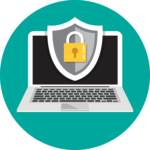Table of Contents
Operations
-
Overview
Operational considerations are an important component when transforming to a digital learning environment. The following sections provide education leaders with the information and resources they need to implement digital learning. The resources are intended to inspire conversation, evaluation and reflection around the current state of your educational ecosystem as well as support your planning and implementation in the digital age.- Budget
- Procurement / RFP Management
- Interoperability
- Student Data Privacy
- Devices
- Technical Support
-
Budget
To promote effective and efficient uses of digital tools and resources, spending should align with the district vision for digital learning. Strategic short- and long-term budgeting is essential as states, districts, and schools continue to make investments in bandwidth, networking, devices, and digital instructional materials to support effective digital learning. The National Education Technology Plan (NETP 2017) recommends that once a district establishes a vision for the use of technology, district and school leaders should examine existing budgets to identify areas in which spending can be reduced or eliminated to pay for learning technologies. As districts are often challenged financially when it comes to implementing technology initiatives and programs, they should also consider creative funding for the implementation of digital learning. Cost savings can take place when technology based tools and resources are not viewed as additional costs but as an opportunity to shift funding to support learning in the digital age.Facilitator Guide
 The Facilitator Guide – Budget provides education leaders with the information and resources they need to conduct a professional learning session. Participants will:
The Facilitator Guide – Budget provides education leaders with the information and resources they need to conduct a professional learning session. Participants will:
- Learn more about budgeting for digital learning
- Collaborate with colleagues on key questions related to digital learning budgets
- Acquire resources to support budget planning and considerations
- Develop and maintain relationships with other district and state leaders
Resources
-
Procurement
Widespread access to digital instructional materials is often dependent on successful navigation of the purchasing process. State procurement is often like the peeling of an onion—there are multiple layers to go through. In education, the buying and selling of merchandise and services, whether it is furniture, technology equipment, paper, broadband connectivity or instructional materials, typically requires following some level of state or local procurement laws. Some states have a procurement office specific to the department of education, whereas, other states may use statewide central purchasing as a standard. At the district level, some districts utilize cooperative purchasing through regional consortia and other districts may provide flexibility at the school level to make decisions regarding the acquisition of products and services. This is true for all purchases including instructional materials. Some states and districts might have policies for obtaining office furniture, but not for the acquisition of instructional resources. Other states may have policies for textbook adoption, but not for acquiring digital tools and resources or OER. States and districts can work to make the procurement process more transparent, and develop specific procedures to aid educators and the private sector in navigating the process. All stakeholders (public and private) should commit to developing relationships with a variety of decision-makers, recognizing that there are multiple interested parties with differing needs.Key Questions
- Does the state have guidelines?
- Does the district have guidelines?
- Who are the interested parties in acquisition?
- Curriculum designers
- Principals
- Teachers
- Procurement office
- Budget office
- What are the procurement guidelines/restrictions/impacts for:
- Print core instructional materials?
- Digital/online/blended core instructional materials?
- Openly-licensed core instructional materials (OER)?
- Are the acquisition requirements different for core materials vs. supplemental materials?

Facilitator Guide
 The Facilitator Guide – Procurement provides education leaders with the information and resources they need to conduct a professional learning session. Participants will:
The Facilitator Guide – Procurement provides education leaders with the information and resources they need to conduct a professional learning session. Participants will:
- Learn more about procurement and RFP management
- Identify procurement challenges and success stories
- Collaborate with colleagues and develop solutions for challenges
- Discuss how changes in state/local policies can improvement the procurement process
- Develop and maintain relationships with other district and state leaders
-
Interoperability
While states, districts, and schools have long collected certain education data for accountability purposes, there is growing interest in leveraging data from digital learning tools, online services, educational apps, and other technologies. However, with all the data available to us through technology, school leaders and educators still lack the ability to easily transform that data to information to help guide decisions about instruction, school administration, and operations. Further, the systems we use to collect, manage, analyze, and report on that data are often disconnected and don’t work well together.Key Questions
- Does the vendor follow appropriate standards-based data definitions such as those developed by Common Education Data Standards, IMS Global Learning Consortium, Learning Resource Metadata Initiative, P20 Electronic Standards Council or Schools Interoperability Framework Association? (These do not compete with each other; the standards they have created are intended for distinct purposes.)
- Does the software allow for sharing of information across applications by adhering to standards developed in these types of initiatives: Digital Passport, Ed-Fi Alliance, Experience API, MyData, or OpenBadges? (Again, these do not compete; they address specific types of data sharing.)
- Does the software enable the search, alignment and discovery of digital content through the use of initiatives such as Learning Registry or Learning Resource Metadata Initiative?
Facilitator Guide
 The Faciliator Guide – Interoperability provides education leaders with the information and resources they need to conduct a professional learning session. Participants will:
The Faciliator Guide – Interoperability provides education leaders with the information and resources they need to conduct a professional learning session. Participants will:
- Understand interoperability needs
- Review national interoperability standards and tools
- Hear from exemplars on how to overcome challenges
- Interact with your peers to learn what tools they use
- Develop and maintain relationships with other district and state leaders
-
Student Data Privacy
The National Education Technology Plan discusses how the use of student data iscrucial for personalized learning and continuous improvement (see Section 4: Assessment). Acting as the stewards of student data presents educators with several responsibilities. School officials, families, and software developers have to be mindful of how data privacy, confidentiality, and security practices affect students. Schools and other educational institutions should be certain that policies are in place regarding who has access to student data and that students and families understand their rights and responsibilities concerning data collection. Districts should have a policy or procedure for reviewing third party agreements in the terms of service or contract for compliance around use, protection (data security) and destruction of student personally identifiable data. The U.S. Department of Education Protecting Student Privacy provides technical assistance to help schools and school districts use best practices in their use and management of information about students.Policies
Family Educational Rights and Privacy Act (FERPA)
The Family Educational Rights and Privacy Act (FERPA) is a federal law that protects the privacy of student education records. New regulatory changes for FERPA became effective on January 3, 2012. Within the National Center for Education Statistics, the Department established a Privacy Technical Assistance Center (PTAC), which serves as a “one-stop resource” for the P-20 education community on privacy, confidentiality, and data security. Since its launch, the center has developed a PTAC Toolkit that provides resources on data sharing, security best practices, and other relevant topics. Among other things, the 2012 changes to FERPA expanded the requirements for written agreements and enforcement mechanisms to help ensure program effectiveness, promote effectiveness research, and increase accountability. In February 2014, additional guidance summarized the major requirements of the Family Educational Rights and Privacy Act (FERPA) and the Protection of Pupil Rights Amendment (PPRA) that relate to educational services, and urges schools and districts to go beyond compliance to follow best practices for outsourcing school functions using online educational services, including computer software, mobile applications and web-based tools.
Children’s Online Privacy Protection Act (COPPA)
Congress enacted COPPA in 1998. Most recently, it was amended in December 2012 to take effect on July 1, 2013. The goal of COPPA is to put parents in charge of what information may be collected online about their children under the age of 13. The rule applies to operators of commercial websites and online services (including mobile apps). COPPA allows schools to act as “intermediaries” between website operators and parents in providing consent for the collection of personal information in the school context. For example, when a district contracts with a vendor for homework help, individualized education modules, online research and organizational tools, or web-based testing services, the vendor doesn’t have to obtain consent directly from the parent; the school is authorized to speak on behalf of the student. However, the Bureau of Consumer Protection Business Center also advises schools to inform parents of its practices in their acceptable use policy. When student use of a web service extends beyond school activities, the center adds, the school “should carefully consider whether it has effectively notified parents of its intent to allow children to participate in such online activities.
Children's Internet Protection Act (CIPA)
Schools with E-Rate funding must enforce a policy of internet safety and certify that they are enforcing a policy of internet safety that includes measures to block or filter internet access for both minors and adults to certain visual depictions. CIPA requirements include maintaining an internet Safety Policy, a Technology Protection Measure and a public notice or hearing. A technology protection measure is a specific technology that blocks or filters internet access. The school or library must enforce the operation of the technology protection measure during the use of its computers with internet access, although an administrator, supervisor, or other person authorized by the authority with responsibility for administration of the school or library may disable the technology protection measure during use by an adult to enable access for bona fide research or other lawful purpose.
Acceptable Use Policies
Acceptable Use Policies
Schools and districts typically implement acceptable use policies (AUP) for students, parents and faculty members that have access to school devices and/or the school- based software or broadband services to help ensure student safety and security and to help protect the school’s equipment and servers. AUPs vary based on school and district implementation programs, and should be customized based on the user groups. Each school or district should review current policies, templates and supporting documents related to device usage and management, broadband access and permissions and contact forms. These policies should be reviewed at least annually. Below, are sample documents that may help to manage user expectations by establishing policies for responsible device use. Examples:- Greene Central High School in North Carolina sample acceptable use policy, signature page, and laptop consent form
- Fairfax County Virginia acceptable use policy.
- iPad Procedures: Lamoille UHS, Hyde Park, Vermont. Fall 2013.
- Student-Centered Universal BYOT Policy Template For Schools.
Resources
- 1-to-1 Essentials – Acceptable Use Policies
- Rethinking Acceptable Use Policies to Enable Digital Learning: A Guide for School Districts
- CIPA Compliance
- Oregon CIPA and eRate Compliance Resource Guide
- Rethinking State and School District Policies Concerning Mobile Technologies and Social Media
- Navigating the Digital Shift
Facilitator Guide
 The Faciliator Guide – Student Data Privacy provides education leaders with the information and resources they need to conduct a professional learning session. Participants will:
The Faciliator Guide – Student Data Privacy provides education leaders with the information and resources they need to conduct a professional learning session. Participants will:
- Learn more about data privacy
- Collaborate with colleagues to learn the current status of privacy programs
- Assess the strengths and challenges of your school’s privacy program
- Explore ways to engage parents
- Acquire resources supporting student data privacy
- Develop and maintain relationships with other district and state leaders
-
Devices
Choosing the correct device is critical to the success of a digital learning environment. As with any planning process, it is crucial to understand the baseline implementation to effectively prepare for the future, and this is especially true when planning for digital devices. During the planning process, districts typically look at the demographics, achievement and technology skills of the students and teachers, the teachers’ professional learning history and their general comfort with using technology to meet individual needs. Clearly defined district needs from the planning process can help to identify the best devices to access the content and applications required to meet program goals. A district may be focusing on a variety of needs ranging from increasing student achievement to decreasing discipline issues to shifting learning to a project-based approach and each of these areas may impact device-purchasing decisions. Schools and districts vary in their approach to deployment of devices depending on budget considerations and needs assessments. Identifying the most appropriate new devices can be challenging, but it is a critical element of the planning process. There are multiple options available including tablets, laptops, cloud based devices, eReaders and smartphones. Because technology is continually evolving, it is important for leaders to keep abreast of the field. Key considerations leaders should consider include:- Assessing the professional learning needs for teachers and students for implementation of digital learning instruction.
- Analyzing the impact of the various device options and the number of planned devices on the networks, broadband and Wi-Fi systems.
- Comparing the direct device costs and costs for digital applications and resources, as well as the cost for tech support plan options.
BYOD Considerations
From the Field
 “Decisions about student device selection should stem first from the academic learning goals and include considerations related to educator effectiveness, budget and technology support. It is not about the device, it is about how the device will support the learning.”
– Alex Macdonald, Idaho Department of Education
“Decisions about student device selection should stem first from the academic learning goals and include considerations related to educator effectiveness, budget and technology support. It is not about the device, it is about how the device will support the learning.”
– Alex Macdonald, Idaho Department of Education -
Technical Support
Rapid changes in the ways technology is used for learning require an approach to technology support that reduces downtime and provides a fast, consistent, reliable experience for administrators, educators and students. The most effective tech support models are constructed directly from a high quality technology planning process that integrates technology with other school-wide support goals. Successful districts have found it valuable to think broadly about the best overall approach to meet support needs comprehensively before establishing specific details that define what support will be provided to whom and by whom. While no two districts provide exactly the same combination of tech support products and services to their users, all have defined core elements comprising “tech support” that contribute to successfully meeting their local needs. The following questions have helped districts define, plan for, and implement the core components of tech support.Approaches
Once the central components of tech support have been identified, districts can begin to define where tech support will be based, the ways that help tickets will flow through the service pathway, and how tech support will be staffed. Tech support typically begins with a help desk or service desk, but also can include service-level agreements with various providers, and both live and media-delivered face-to-face training and online support, school-based/school employees, student tech support teams, and tech support cooperatives. If there is a lot of demand, the “front line” may spend much of its time dispatching tickets to other people instead of trying to solve specific problems. If there is less demand and a highly skilled and knowledgeable person taking the first request, many of the requests may be able to be handled immediately. Regular monitoring of tech support implementation and impact can provide valuable insight about how teachers and students use technology, as well as barriers to use.Help Desk
In House Support
Service Level agreements
Many schools and districts currently include some level of service plan with providers when completing their equipment purchasing contracts. Considerations related to level of support, costs and long-term sustainability should be reviewed when considering incorporating the service level agreements to equipment purchasing contracts.Tech Support Cooperatives
Key Questions
- What are the goals of the tech support team? Are those goals, including priorities, defined and publicized for all users?
- How will requests be initiated and what is the process for prioritization?
- What are the business hours of tech support, and the policies for nights/weekends/summer?
- How often will routine maintenance occur? How will you communicate this downtime to users?
- How will you deploy tech support staff to different campuses?
- What metrics and indicators for tech support success will the district use to help determine cost effectiveness and customer satisfaction with current and future setups?
From the Field
Kuna Middle School’s tier one support is provided by students. An initial cadre of students were trained and then they train other students to help provide technology support. Based on experiences at the local high school, educators have found this student support system to be effective in quickly addressing tech support issues and providing students the experience to support their peers.. Learn more.Resources
- Top Ten Metrics to Monitor Health of your Help Desk
- The Service Desk: IT Infrastructure Library (ITIL)
- Factors to Consider in Implementing a Student Tech Support Team
- Tech Helps 3 – Insufficient Memory
- The Tech Detectives: Students Take Ownership of Technology
- Kentucky Moves 173 School Districts to Cloud-Based ERP
- IlliniCloud
- North East Florida Educational Consortium (NEFEC)

